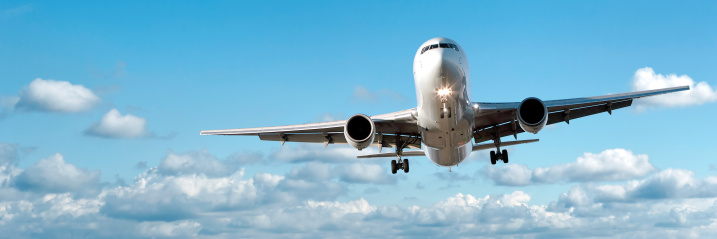Technology Takes Off at Airports Around the World
With modern air travel marked by frequent delays, long lines and crowded gates, the nation’s airports rely on IT to enhance the passenger experience and make airport services more efficient.
The SITA 2012 Airport IT Trends Survey shows that airports have embraced mobile apps, social media and other technologies to make travel more enjoyable. Among the leading drivers of investment: a desire to improve the passenger experience, reduce the cost of airport operations and step up workforce productivity.
The number one priority has been to improve the passenger’s experience. If they have a good experience, they have greater loyalty.
Airports in the United States differ from other state and local agencies because they’re mostly self-funded, typically from airline fees and concession sales. The facilities must attract carriers by operating at a low cost, yet foster a pleasant environment to encourage passengers to patronize the venues’ stores and restaurants.
“The number one priority has been to improve the passenger’s experience,” says Kevin Peterson, senior product manager for SITA, a consultancy specializing in airport IT. “If they have a good experience, they have greater loyalty.”
The idea is to give travelers some time to browse or dine before their flights or during layovers.
Improved Flexibility
In 2011, Sacramento International Airport completed a $1 billion construction project that used green construction materials and emphasized tech-friendly features for travelers, such as abundant power outlets and USB ports.
The massive project also incorporated virtualization to create shared-use gate space. The Extended Airline System Environment (EASE) allows airports to use gate space more flexibly and efficiently than traditional methods, says Steven Baird, deputy director of infrastructure support and service delivery for the airport, a department of Sacramento County, Calif.
“The gate numbers and the equipment are fixed, but who operates them is flexible,” Baird says. “A gate could be one airline one hour and another airline the next hour. You need a lot less space overall.”
In fact, the airport had planned to add 28 new gates during construction but discovered that 19 would be sufficient. “We saved $100 million by putting this system in place,” Baird says.
Virtualization technology helped the airport hold down costs to the carriers, and the system appealed to the airlines because they no longer needed to run their own IT equipment at the gates. The airport supplies the computers, peripherals and network, and the carriers run their own reservation systems on the common machines. The airport can switch a gate from one carrier to another on the fly.

Credit: iStockphoto/Thinkstock
“The airlines don’t have to rewrite their systems to get their reservation system to work here. They can come and go with relative ease, which saves them money,” Baird adds.
Further sweetening the value for the carriers, the airport does not use software that encapsulates the airline’s reservation system within the airport’s Air-Transport IT system, allowing the carriers to avoid the process of certifying the airport network every time there is a change.
“They push the updates down to the machines as if they are operating in their own environment,” Baird says. “[Updates] don’t have to be blessed. If it operates in their environment, it will operate in ours.”
The new system boosts efficiency for the airlines, and also makes life easier for passengers. The system is embedded with the flight information display system so that any changes are immediately displayed to customers. Outdoor fixed digital signage also helps to minimize confusion.
Secure Facilities
4.3%
Average percentage of airport revenue spent on IT
SOURCE: SITA 2012 Airport IT Trends Survey
Security is also top of mind for airport IT projects. For example, the Minneapolis–St. Paul International Airport recently embarked on a $20 million high-definition surveillance project to retire aging CCTV cameras.
“We decided we needed to replace the whole system,” says David Ruch, director of information services for the Metropolitan Airports Commission in Minneapolis. The airport’s legacy analog CCTV system had quality issues as well as spotty coverage. The IT team is now deploying back-end hardware and video-management software from Verint Systems and is about halfway finished with that implementation. Next will come camera replacement, with the final phase of the rollout expected to be complete by the end of 2015, Ruch says.
One wouldn’t normally think of security as something that enhances the passenger experience, but it does so by preventing security breaches. That was the goal Ruch had in mind when he sought advanced surveillance and analytics capabilities for the video system.
“We have software that will evaluate the video stream in real time and assess the activity. It can raise an alarm if something appears to be suspicious,” Ruch says. “People can be tracked from camera to camera with facial recognition. We can track people who are going against the flow of traffic.”
It’s nice to have a relaxing meal at the airport and make it through screening checkpoints quickly, but avoiding security issues also makes for a better travel experience.
San Luis Obispo Saves with Solar Parking Kiosks
Technology investments need not be glamorous to improve life for airport passengers. Case in point: California’s San Luis Obispo Airport, which last year replaced its paper-permit parking-payment system with solar-powered kiosks.
The airport purchased 12 stand-alone, pay-in-advance parking-payment kiosks from Digital Payment Technologies. “Prior to this, we were using paper permits,” says Richard C. Howell, general manager of the San Luis Obispo County Regional/Oceano airports. “Customers would fill it out, leave part on their dashboard and drop part of it off in the terminal.”
The imperfect system left ample opportunity to cheat, which meant the airport lost money and had to make up those costs elsewhere. Rather than invest $200,000 to $500,000 to install a traditional swing-arm parking payment system, the airport spent about $100,000 for the units.
Implementation was straightforward. “The kiosks are solar powered, so we did not have to run any power to them,” Howell notes. The system communicates over a Wi-Fi network. When the software is upgraded, passengers who are delayed out of town will be able to add money via their smartphones.
Howell believes this capability will make life easier for passengers. “Our goal was to update our system to make travel from the airport more convenient for our community, and we believe we accomplished that.”







